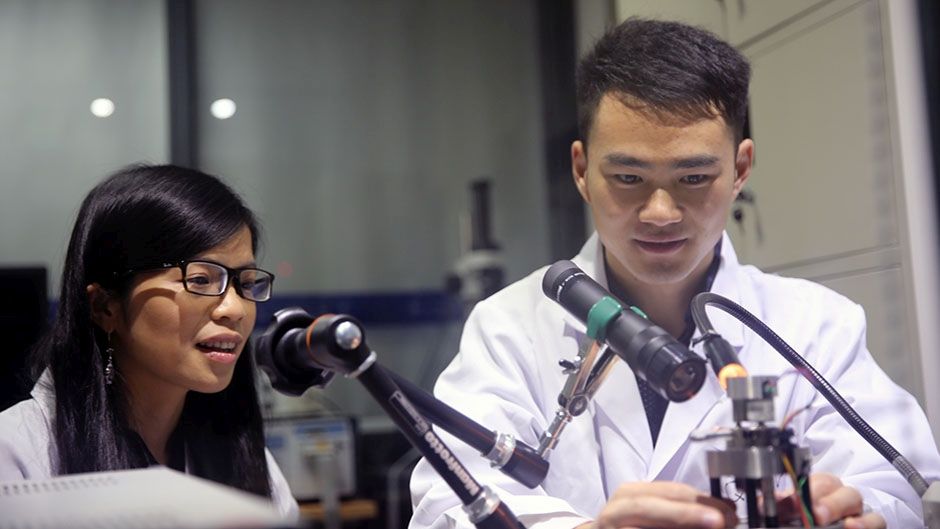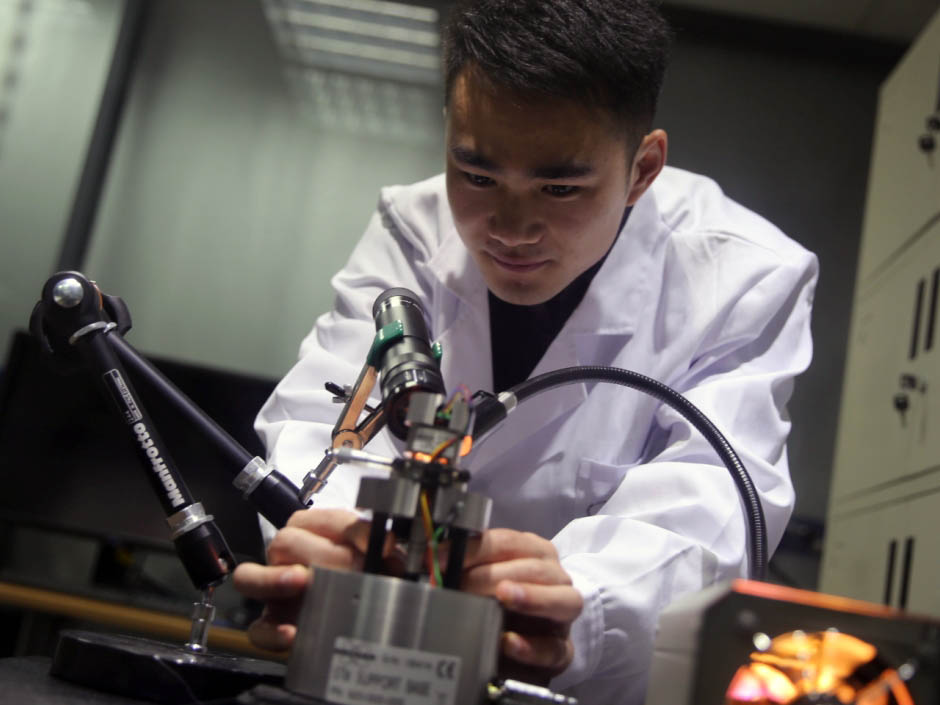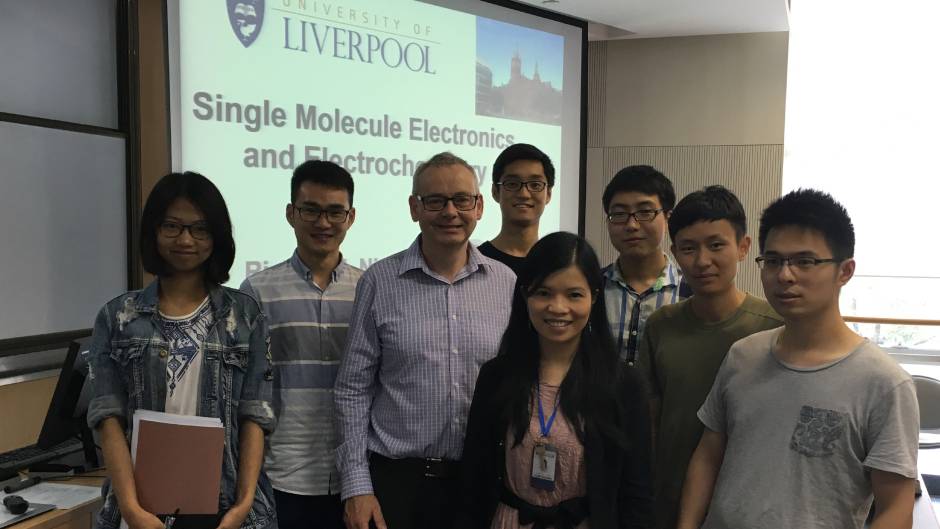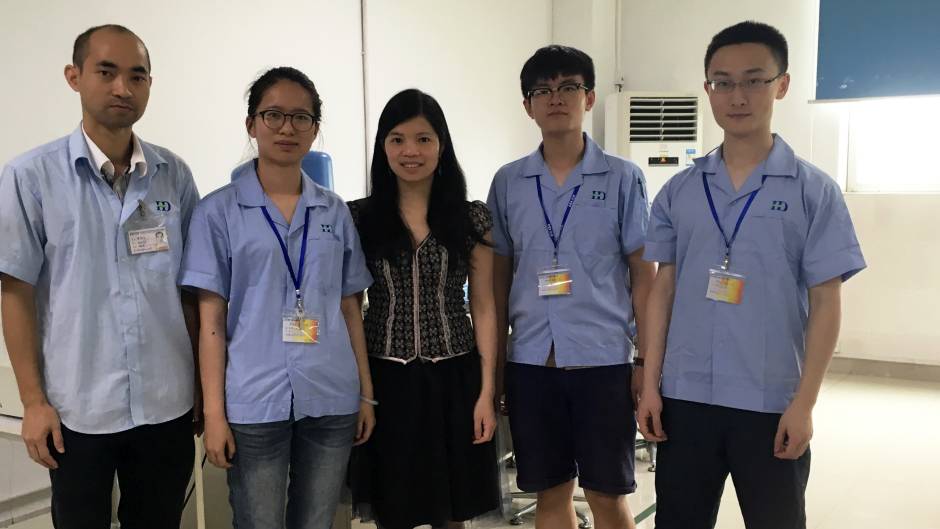13 Oct 2016
With the announcement of the 2016 Nobel Prize in Chemistry being awarded to scientists working on ‘molecular machines’, researchers in Xi’an Jiaotong-Liverpool University’s Department of Chemistry are making their own contribution to the utilisation of this revolutionary technology.
The XJTLU research group, led by associate professor Li Yang (pictured below, left), are working to incorporate molecules into conventional electronics, thus extremely reducing the size of electronic devices.

The group’s work is already being recognised by the scientific community with the publishing of a paper in the journal ‘Nano Letters’, a top level journal in the chemistry field with the impact factor of 13.78.
In the paper, a ‘molecular junction’ was successfully constructed by connecting the alkanedithiol molecule to a novel two-dimensional graphene electrode. Molecular junctions are formed by wiring a single molecule or a few molecules in parallel between two electrodes. They are a foundational unit in molecular electronics and understanding their potential for electrical transport is of paramount importance to the field’s future development.
Using the molecular junction, a direct measurement of the charge through the molecule can be made with a scanning tunnelling microscope. The scanning tunnelling microscope measures the current that flows through the junction.
The research represents the first direct measurement of electrical properties using a graphene surface instead of a metal surface, which has been the focus of most previous research on this topic.
A reviewer from ‘Nano Letters’ said: “There is a fair number of reported studies such as these, but virtually all using metal, say gold, surfaces and tips. The study here and the results are important and scientifically novel. This paper addresses the important question of how an asymmetric graphene-molecule-gold structure compares with a symmetric gold-molecule-gold structure.”
When compared to a conventional symmetric junction, the XJTLU researchers found that the asymmetric contacting and weak coupling at the molecule-graphene interface led to a stronger charge transfer than at a gold electrode-molecule interface. This implies that long molecular chains have a higher conductance of energy, with potential applications for low energy consuming molecular electronics.

Qian Zhang (pictured above), first author on the paper and a PhD student at XJTLU, said: “We’re so excited to make this progress and get recognition from this high-profile journal. The techniques behind molecular machines are demonstrating the next steps in the miniaturisation of technology.”
Molecular machines use molecules with controllable movements that can perform tasks when energy is added. It is a technique being pioneered by the 2016 Nobel Prize in Chemistry winners - Jean-Pierre Sauvage, Sir Fraser Stoddart and Bernard Feringa – who were honoured for their work building the world’s smallest machines out of chemical molecules.
The first steps towards a molecular machine were taken by French coordination chemist Sauvage in 1983, when he successfully linked two ring-shaped molecules together to form a chain, called a ‘catenane’. In 1991, Scottish chemist Sir Fraser developed a ‘rotaxane’, a structure in which a molecular ring is threaded onto a thin molecular axle, which he was able to demonstrate could move along the axle.
Thanks to his work, molecular lift, molecular muscle and molecular computer chips were developed and Dutch chemist Feringa became the first person to develop a molecular motor, when in 1999 he got a molecular rotor blade to spin continually in the same direction. Using molecular motors, he has been able to rotate a glass cylinder 10,000 times bigger than the motor and has designed a nanocar.
The Royal Swedish Academy of Sciences, which awards the Nobel Prize in chemistry, explained the significance of their work and its potential impact on the future: “The molecular motor is at the same stage as the electric motor was in the 1830s, when scientists displayed various spinning cranks and wheels, unaware that they would lead to electric trains, washing machines, fans and food processors.”
13 Oct 2016
RELATED NEWS

Molecular electronics study could lead to smaller, more powerful devices
A research team from the Department of Chemistry at Xi’an Jiaotong-Liverpool has measured for the first time the charge transfer of single-molecule junctions...
Learn more

PhD students learn crucial skills on industry internship
Three PhD students at Xi’an Jiaotong-Liverpool University took part in a two-week industry internship to build their skills in making rechargeable lithium io...
Learn more







